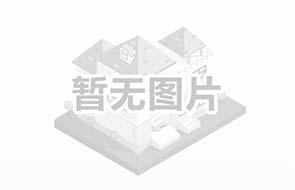物流與資訊科技


資訊的有效和高效利用可以給物流和供應鏈管理帶來諸多益處,其中最突出的四大益處如下:
1、擁有更多的供應鏈知識和可視性,使資訊取代庫存成為可能;
2、利用銷售資料,可以更好地瞭解顧客需求,從而有助於改善計劃並減少供應鏈中的變異;
3、透過企業資源計劃系統,更好地協調製造、營銷和配送活動;
4、精簡的物流資訊系統可以簡化訂單處理流程並縮短提前期。
The effective and efficient use of information can bring many benefits to logistics and supply chain management, among which the four most prominent benefits are as follows:
1。 Having more supply chain knowledge and visibility, making it possible for information to replace inventory;
2。 Using sales data can better understand customer needs, thereby helping to improve plans and reduce variability in the supply chain;
3。 Through the enterprise resource planning system, better coordinate manufacturing, marketing and distribution activities;
4。 The streamlined logistics information system can simplify the order processing process and shorten the lead time。


適當資訊科技的成功實施和開發是維持競爭優勢的關鍵。同時,有效且高效地利用資訊可以使企業庫存與顧客需求相匹配,從而在降低成本的同時提高顧客滿意度。
The successful implementation and development of appropriate information technology is the key to maintaining a competitive advantage。 At the same time, effective and efficient use of information by universities can match corporate inventory with customer needs, thereby reducing costs and improving customer satisfaction。

一、資訊管理系統的一般型別
1、辦公自動化系統:提供有效的方式處理個人和組織的業務資料,執行計算並生成檔案;
2、通訊系統:透過多種不同的互動和資訊分享,幫助人們協同工作。如全球定位系統(GPS);
3、交易處理系統(TPS):收集和儲存交易資訊並對交易過程的某些方面盡心控制;
1。 General types of information management systems
1。 Office automation system: Provide an effective way to process personal and organizational business data, perform calculations and generate files;
2。 Communication system: Help people work together through a variety of different interactions and information sharing。 Such as the Global Positioning System (GPS);
3。 Transaction Processing System (TPS): Collect and store transaction information and control certain aspects of the transaction process;

4、管理資訊系統和主管資訊系統:將TPS資料轉換成資訊以監控績效和管理組織,以易於理解的形式向高階主管提供資訊;
5、決策支援系統:透過提供資訊、模型或分析工具來幫助管理者制定決策。如運輸管理系統和倉庫管理系統;
6、企業系統:創造並維持一致的資料處理方法和跨業務職能的整合資料庫。
4。 Management information system and supervisor information system: Convert TPS data into information to monitor performance and manage the organization, and provide information to senior supervisors in an easy-to-understand form;
5。 Decision support system: Help managers make decisions by providing information, models or analysis tools。 Such as transportation management system and warehouse management system;
6。 Enterprise system: Create and maintain consistent data processing methods and integrated databases across business functions。


二、網際網路對物流的影響
網際網路對物流在很多方面都產生影響,我們只討論四種特殊的影響——線上零售、雲計算、電子採購和物聯網。
2。 The impact of the Internet on logistics
The Internet has an impact on logistics in many ways。 We will only discuss four special impacts-online retail, cloud computing, e-procurement, and the Internet of Things。


1、線上零售:線上零售和線下零售具有很多相似的物流環節,還可能使用相似的工具,但是在某些環節的執行上,它們具有極大的不同。如,線上零售的訂單多,但是每一個訂單的量較少;
1。 Online retail: Online retail and offline retail have many similar logistics links, and may also use similar tools, but they are very different in the execution of some links。 For example, there are many orders for online retail, but the quantity of each order is small;

2、雲計算:按需軟體和服務軟體的總稱。有多種與物流相關的雲計算應用軟體,如協同預測與庫存最佳化雲計算軟體。運輸管理系統已成為最流行的按需應用軟體;
3、電子採購:利用網際網路使企業採購物品和服務變得更加容易、快捷且更便宜。電子採購可以帶來交易收益、合規收益、管理資訊收益以及價格收益;
2。 Cloud computing: the general term for on-demand software and service software。 There are a variety of cloud computing applications related to logistics, such as collaborative forecasting and inventory optimization cloud computing software。 The transportation management system has become the most popular on-demand application software;
3。 Electronic procurement: The use of the Internet makes it easier, faster and cheaper for companies to purchase goods and services。 Electronic procurement can bring transaction benefits, compliance benefits, management information benefits and price benefits;


4、 物聯網:指嵌入到物體中的並能透過網際網路進行跟蹤和控制的感測器和資料通訊技術。物聯網的潛在益處可以體現在所有型別的物流活動中,諸如倉儲、運輸、最後一公里交付等。
4。 Internet of Things: Refers to sensors and data communication technologies that are embedded in objects and can be tracked and controlled via the Internet。 The potential benefits of the Internet of Things can be reflected in all types of logistics activities, such as warehousing, transportation, and last-mile delivery。

本文由learningyard新學苑原創,如有侵權請聯絡溝通~
素材來源於《物流學》——第12版 中國人民大學出版社
圖片來源於百度
翻譯來源於谷歌翻譯

